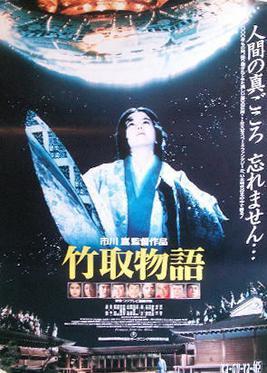 |
| Robert Mitchum and Jean Simmons in Angel Face |
Diane Tremayne: Jean Simmons
Mary Wilton: Mona Freeman
Charles Tremayne: Herbert Marshall
Fred Barrett: Leon Ames
Catherine Tremayne: Barbara O'Neil
Director: Otto Preminger
Screenplay: Frank S. Nugent, Oscar Millard
Based on a story by Chester Erskine
Cinematography: Harry Stradling Sr.
Music: Dimitri Tiomkin
Otto Preminger was about to take on the Production Code when he made Angel Face: His next film was The Moon Is Blue (1953), a rather tepid little romantic comedy that offended the Code enforcers because its heroine, though relentlessly virginal, demonstrated an awareness of and interest in extramarital sex that was one of the Code's taboos. With the backing of United Artists, Preminger went ahead and made the film, releasing it without the Code's imprimatur. The result was a succès de scandale, a hit far beyond any actual merits of the film, after it was condemned by the Catholic Legion of Decency and by some local censorship boards. Two years later, Preminger and United Artists would follow the same procedure with The Man With the Golden Arm (1952), a film about drug addiction that also flouted some of the Code's prohibitions. Preminger's stand is usually cited among the landmarks leading to the end of film industry censorship. I mention all this because I was struck by how Preminger also ignores the Code's conventional morality in Angel Face, which makes it clear that Frank Jessup has been sleeping with his girlfriend, Mary Wilton -- among other things, he reveals that he knows what she wears to bed, and when he goes to see her, she's in her slip getting ready to go out and doesn't bother coyly pulling on the usual bathrobe. The thing is, Mary is the film's "nice girl," the character meant to be the foil to the film's murderous Diane Tremayne. But Diane doesn't smoke or drink, and Mary does. Some of the reason for Preminger's blurring of the lines between the usual Hollywood ideas of good and bad in these characters probably stems from a desire to build suspense, keeping us from being entirely sure that Diane is the one who turned on the gas in her stepmother's room or if she really is guilty of the murder for which she stands trial. But I suspect that it has more to do with Preminger's desire to pull his characters out of the usual pigeonholes of Hollywood melodrama, to make them plausible, enigmatic human beings. To some extent he's fighting the script, adapted by Frank S. Nugent and Oscar Millard (with some uncredited help by Ben Hecht) from a story by Chester Erskine, which on the face of it is the usual stuff about a conniving woman who loves her daddy too much and who stands to gain from her stepmother's death, ensnaring an unsuspecting man along the way. Mitchum's sleepy-eyed raffishness could have been used to make him the usual tough-guy collaborator of a femme fatale, like Fred MacMurray's Walter Neff in Double Indemnity (Billy Wilder, 1944) or John Garfield's Frank Chambers in The Postman Always Rings Twice (Tay Garnett, 1946), but it's not a knock on those two great noirs to say that Preminger does something more subtle with Mitchum's Frank Jessup: He's an accomplice and a victim only by accident, letting his hormones put him in harm's (i.e., Mary's) way, and struggling ineffectually, even a little tragically, not to be dragged down by her. Angel Face is not as well-known as those other films, but with its solid performances, its effective and unobtrusive score by Dimitri Tiomkin, and its knockout of an ending, it deserves to be.



_poster.jpg)





